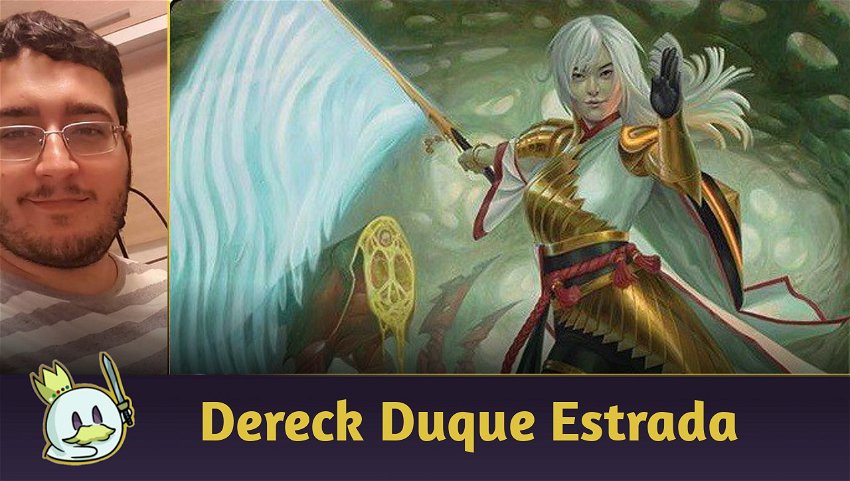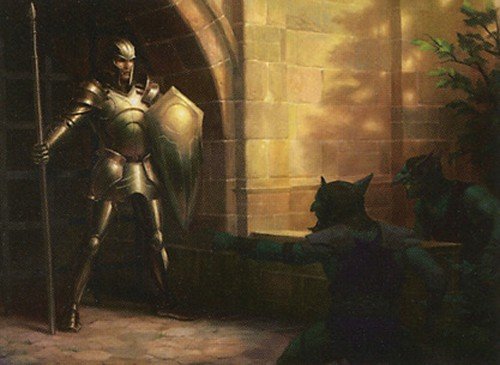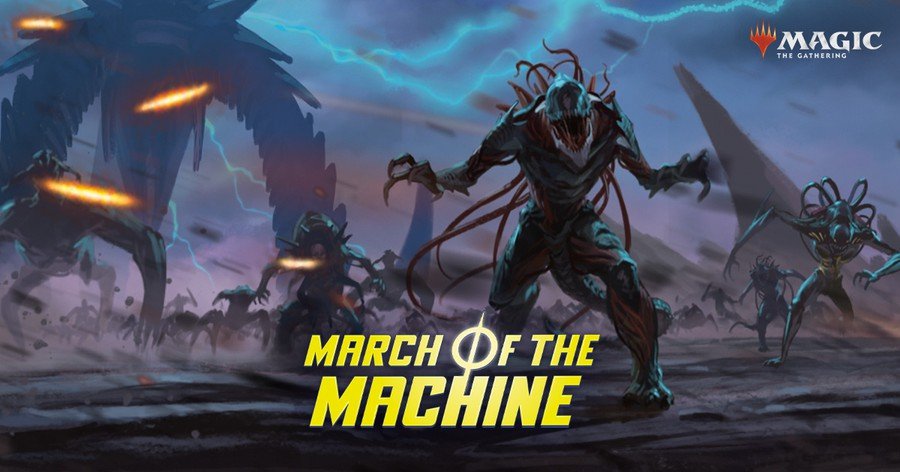5 New Decks with Phyrexia: All Will Be One
Hey guys, another collection arriving and with it, we have some changes in the Metagame, updates to the top decks, attempts to improve the decks that seek this place and the emergence of new strategies to try to steal the crown of the best deck in the format. Today, we're bringing five decks that come with Phyrexia: All Will Be One to Standard.
RG Oil Aggro 

Our first deck on the list is based around Oil Counters, a new theme from the latest set.
Phyrexia bring creatures that have abilities activated when removing the oil counter, others that check their quantity, and still those that verify the number of permanents with counters on the battlefield to generate the effect.
In this list I brought, we will use these abilities to punish the opponent's life total as soon as possible.
Decklist
The game plan is very linear: climb the top of the curve and aggro the opponent, but the deck is not a simple aggro. Having several synergies between them, the deck manages to grow piece by piece and take advantage of the counters, Ichorplate Golem appears as a lord for the deck that generates a gain of oil counters.
The key card here is Migloz, Maze Crusher, which in addition to being a creature with an above the curve's body, its three abilities provide exceptional strategy versatility, even more so in a meta where Fable of the Mirror-Breaker and Wedding Announcement are extremely present.

Urabrask's Anointer and Cinderslash Ravager are pieces that count the number of permanents with oil counters on the board and generate effects, often two for one.
The deck is particularly vulnerable to sweepers, and Tyvar's Stand can be a great option to keep open in this match, especially if Exuberant Fuseling is still on the board. Against other aggros, the deck tends to have an edge, as its creatures tend to have a larger body.
It is a good option to be used to farm wins in the best of 1 at Magic Arena, considering that it has fast matches and a very consistent curve.
BG Obliterator 

Following the deck list, we have BG Obliterator, a deck with midrange characteristics that plays around Phyrexian Obliterator and its ability not at all pleasant for opponents.
Decklist
The objective of the deck is to deplete the opponent's resources as soon as possible, and to achieve this we seek to correct the mana curve and speed up the game with Armored Scrapgorger and Llanowar Loamspeaker, as Obliterator has the cost of four black mana.
Once you have enough mana, the deck's synergy is pretty simple: protect Obliterator from removals and make it fight the opponent's creature, dealing damage and forcing the opponent to sacrifice permanents.
Bushwhack and Tail Swipe are the key cards for the strategy to work, managing to put the pieces together, it is unlikely that the opponent will be able to return to the game after sacrificing their resources.

Outside the deck's main strategy, while fetching pieces, it behaves like a midrange. It makes use of efficient removals early game, with versatile creatures like Glissa Sunslayer, which allows you to draw cards, remove enchantments or counters, and Graveyard Trespasser to deal with opposing graveyards.
This is a deck that can catch opponents off guard, and you need to have good non-damaging removals to stop the Phyrexian Obliterator threat.
It manages to have an advantage against aggro decks, but against midrange decks it takes a little caution to protect and conserve its main strategy. Against control, it's important to be more aggressive, Sheoldred, The Apocalypse is an excellent way to reverse these games.
GW Toxic 

Another list that appears is Selesnya Toxic, a list with the aggro footprint that puts the opponent in check due to its ease in raising poison counters.
Poison counters are already known in Magic, which when accumulated in a total of ten counters in the same player, cause their defeat, however we have a change in the way of distributing these counters - With the arrival of Phyrexia: All Will Be One, Creatures with the Toxic ability appeared.
Unlike Infect, where the damage the creature deals to the player is placed in the form of poison counters, Toxic has a predefined number of counters, that is, a creature with Toxic 2 will place two poison counters if it causes damage to the player. You can see more about the differences clicking here.
Decklist
Yet another aggro list for a Metagame that has been lacking in pressure options on the opponent. The deck is based on an overcrowding of the battlefield to undermine the opponent's life total and increase the poison counters.
The turn of the deck is pretty intense, with twelve creature options for turn one and eight more options for turn two. And more versatile options on turn 3, with Annex Sentry works as a removal and Bloated Contaminator as a top turn aggressor that manages to run over blocks and is a constant threat, as it can place counters and proliferate.

Skrelv’s Hive is a card that, in addition to helping with the deck’s aggressive strategy, provides resilience for games against high-removal midranges, being especially efficient against Grixis, which has few enchantment removal options.
Ajani, Sleeper Agent is a positive addition to the deck, allowing you to boost your creatures, get more gas to close out matches, and its ultimate is almost a guarantee of victory.
Speaking of the manabase, both Mirrex and The Seedcore are excellent options to equalize the mana curve in the early game and in later moments, allowing you to keep the pressure on with your abilities.
Midranges in general can end up having trouble against this list, its ability to hold the battlefield with Mirrex or Skrelv's Hive makes targeted removals seem like a waste. Venerated Rotpriest is a fantastic card that grants poison counters to the opponent when played on turn one and can help end the game in the final turns, as the opponent will have to start being careful with the removals they use.
Exper Superfriends 


A new option that emerged is to use a control strategy that was a from Standard, the “Superfriends”.
The superfriends' plan consists of resorting to different types of planeswalkers to control the game and generate constant advantages with their abilities. This allows your resources to remain constant to always have answers to your opponent's threats, while the planeswalkers are responsible for finishing the game.
With the inclusion of several planeswalkers, it was possible to have more consistent and synergistic lists.
Decklist
The structure of the deck is focused on control, making use of various sweepers to delay the opponent as much as possible. Liliana of the Veil provides some valuable turns, pulling out an opponent's creature and drawing attack, helping to preserve our life totals and prolong the game.

With planeswalkers on the field, cards like Drown in Ichor, Reject Imperfection, and Experimental Augury now increase in efficiency by increasing the planeswalkers' loyalty.
Once control is established, it is very difficult to get around the value that superfriends is capable of generating.
It tends to have good games against midrange decks, but having to work around Invoke Despair.
UG Poison Ivy 

And we arrive at the long-awaited “combo”, one of the most talked about decks during the previews. It is a deck that seeks to take advantage of the synergies of the cards and end the game by including several poison counters on the opponent quickly.
Decklist
The strategy revolves around two pieces, the Venerated Rotpriest and Ivy, Gleeful Spellthief. With these pieces on the board, the goal is to abuse the ability of both, so we have a considerable amount of spells to target our creatures.

Synergy Operation
As Ivy copies the spells that target other creatures, but targeting her, the idea is that each time we do that the Rotpriest's ability triggers, this will include two poison counters on the opponent, so we have a series of spells that allow to stick to that plan and protect the creatures.
To find the important pieces, we have Stormchaser Drake and Distorted Curiosity. March of Burgeoning Life appears as a catalyst in the deck, being able to tutor a second Rotpriest and making the opponent's life more complicated.
The rest of the deck is protection cards aimed at keeping the pieces on the field and continuing to put counters on the opponent.
Poison Ivy Variations
This deck, in particular, has several formats that should be tested, and here I opted for a list more focused on including the markers directly.
However, there are versions that use Combat Research and Security Bypass. These lists do not utilize the Kamigawa Neon Dinasty gears, and include more Bloated Contaminator pieces, focusing more on assaulting the opponent.
Another variation is the Temur list ( 
Poll
And for you, what was your favorite list among the ones we presented?

As my heart always goes out to an aggro deck, my vote is for GW Toxic.
Conclusion
Phyrexia: All Will Be One brought us a variety of cards and strategies, in this first moment all decks will be put to the test, the lists will be improved, and some dominance should fall, I'm still looking forward to new lists.
Doubts, compliments, criticism come and talk to me in the comments.
I hope you enjoyed the article. Thanks for reading, and we'll see you next time!














— Comments 0
, Reactions 1
Be the first to comment